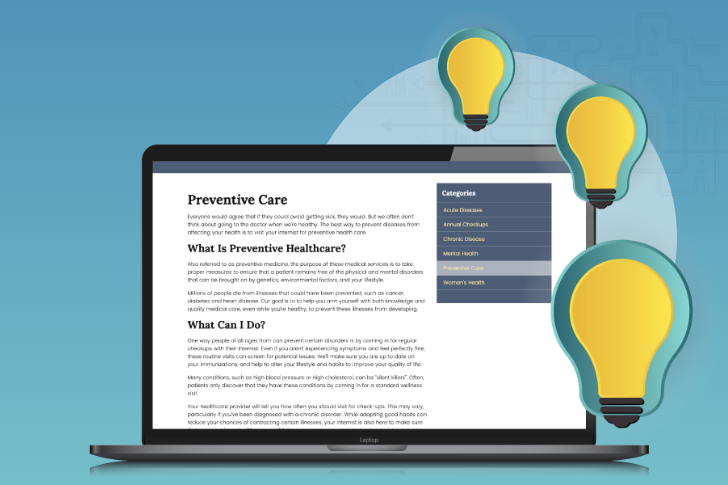
Before now, most healthcare providers, including cardiologists and cardiology practices, have been dependent on traditional marketing to generate new patient leads. But with the advent of digital marketing, cardiology practices can now reach patients and potential patients, even beyond their local areas.
Benefits Of Cardiology Marketing
While cardiology marketing’s end goal is to grow your patient base and increase revenue for your office, when coupled with the right strategies, cardiologists may see many other benefits as well. Including the following:
Cardiology Marketing Helps To Increase Your Brand Awareness
Developing a strong brand awareness for your healthcare center helps you stay top-of-mind when potential patients think of places to get heart care. Staying top-of-mind, especially with local searchers, can lead to more online inquiries, more phone calls, and ultimately should improve conversion numbers for your cardiology clinic, which translates to an increase in income/revenue.
Cardiology Practice Marketing Focuses On Your Target Audience
Cardiology marketing experts know how to implement the most effective strategies for Search Engine Optimization (SEO), pay-per-click (PPC), and other attention-attracting methods to ensure that your prospective clients are directed to your healthcare organization.
These professionals know how to research the highest performing keywords, to find the ones that speak most directly to the patients that you are trying to reach, and how to infuse these keywords into your content. This way you show up higher in results for the right kinds of searches and help your cardiology practice be easily located online by the people who are most likely to convert.
Maintain Your Cardiology Practice’s Online Reputation
To get new patients into your medical practice, physicians need to maintain a solid online reputation. Reputation Management software and strategies can help you regularly assess and address how your practice shows up online.
You can use this software to constantly monitor mentions of your practice online, so you can respond to reviews and highlight the most positive mentions on your website, to reinforce your brand. You can also use these tools to collect more reviews (and more positive reviews). This software can also help you make sure that your practice contact information is consistent everywhere it shows up online to avoid confusing potential patients.
Reach Out To A Larger Local Audience
With an efficient and effective cardiology marketing plan, you can reach out to a larger circle of patients, edging out your competitors in the cardiology specialty field.
For example, local SEO helps you direct more local searches to your practice’s website, getting you seen by more potential patients who have very real potential for conversion.
Cardiology Marketing Strategies
Practice Search Engine Optimization (SEO)
When a potential patient searches online (e.g., heart clinic around me), your cardiology care center has to show at the top of the search of Google whether it is within the Google Search or just on Google Maps. The best results can only be achieved with a combination of both local SEO and paid advertising.
· Organic SEO
Organic SEO is, as the name would imply, a natural way to make your way to the top of search results. Strategies for making your way to the top include researching and implementing relevant keywords and including them in your website’s content. When search engines, such as Google, crawl the web looking for relevant content, they will find your site and rank it higher. It’s an essential part of your long-term strategy. But for proper implementation, Organic SEO requires skills that only experts can provide.
While Organic SEO is highly trustworthy, it takes some time to build, so you should not expect to see results right away. If you want to see immediate results, you also need to make PPC a part of your search marketing mix.
· Paid Ads For Your Cardiology Practice
Organic SEO will raise your cardiology practice’s search ranking over time, but Pay Per Click (PPC) advertising will get you to the top of search results immediately.
It works like this: your practice negotiates prices for desired cardiology- and heart health-related keywords for which you want to be found in searches. When those words are searched for in your local area, your ad appears at the top of the search results. You only pay that negotiated amount when your ad is clicked on.
You set a budget for your ad and, when that budget runs out, your ad stops running. It’s a great way to guarantee immediate visibility for your cardiology clinic to potential patients in your area. And, when used in tandem with Organic SEO, is a potent tool for reaching out to those patients.
Social Media Marketing For Your Cardiology Practice
In cardiology practice marketing, an investment in social media such as Facebook, Instagram, Twitter, and YouTube helps you reach large numbers of potential patients. It also provides the opportunity for you to have direct interactions with them and build a relationship before they even set foot in your office.
Social media marketing can also give you insight into the type of content that interests your prospects. And this will allow you to move them into your marketing funnel quickly.
By creating engaging posts, promptly answering questions, addressing their needs/wants, reply to their messages, and following up on their feedback, social media marketing will allow you to build a community of potential heart patients that you can use to build relationships and grow your patient base. Ensure you are always coming up with new posts to keep visitors engaged. As time goes on, these visitors will turn into a community and can develop the potential to direct new referrals to your healthcare business.
Reputation Management In Your Cardiology Practice
The Internet has made it easier than ever for patients to provide immediate feedback that can be seen by the whole world. And both good and bad reviews are open to the public in digital marketing. So what can you do to maintain your cardiology care center’s good reputation?
Make it easier for patients to leave reviews for your practice online. The more reviews you gather, the more good reviews you are likely to collect. And, when you do receive good reviews, post those immediately to your website and social media pages. Get the word out.
Of course, not every review will be positive. And when you do receive a negative review, be quick with follow-up. Patients will feel they are heard, and you demonstrate to potential patients that you are listening. It may also allow you to fix the issues and help you earn a new, positive review from the same previously dissatisfied patient.
You should also employ the services of a reputation management team. They can help you generate more of those positive reviews that your practice feeds off of. And they can also help you keep your online information consistent, to improve the quality of potential patients’ online interactions and, therefore, their satisfaction.
Positive reviews will enhance the level of trust in your business and generate more leads (potential patients or clients) for your business.
Content Marketing For Your Cardiology Practice
Content marketing is the practice of adding information and messaging to your site to help draw the attention of potential patients. When you push out the right content, your clients feel understood and safe with you.
But how do you push out great content? Study your target audience to understand what they want and how they want it. With this, you will be able to come up with ultra-specific content directed directly at your audience. When you push out unique and valuable content, people are more likely to share it, which can generate more prospects for you and your cardiology practice.
Practice Website Conversion Optimization
When your cardiology practice goes digital, your website will serve as your care center’s home on the internet. This website should contain all the information needed to convert a prospective patient into a patient.
But to convert prospects into patients requires a compelling call-to-action on your website to tell your prospective clients what to do and give them a simple way to contact your clinic and make an appointment. So a call-to-action should be a part of your site design. And you should include a call-to-action button on every page of your website.
However, you have to be very clear with your buttons and put them at strategic locations to maximize conversions, e.g., booking an appointment, making a call, etc. No client should be looking for the button to click when they are ready to reach out to you.
These buttons are the bridge between your investment in medical practice marketing as a cardiologist and making a profit. A professional medical marketing agency will have the skills and tools needed to make sure that these elements are correctly implemented and help you make the most of your investment.
Conclusion
Marketing Experts will employ different strategies, including SEO, pay-per-click (PPC), website conversion, cost per click (CPC), etc., to attract the right audience into your business. These agencies are what doctors like you employ to help handle their marketing efforts. Approach one today when you are ready and give your healthcare marketing the attention it deserves.











